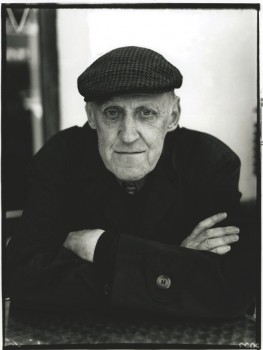Author: Clas Zilliacus
All beauty
17 November 2011 | Authors, Reviews

Bo Carpelan. Photo: Ulla Montan
The epigraph to Bo Carpelan’s prose work, Blad ur höstens arkiv. Tomas Skarfelts anteckningar (‘Leaves from autumn’s archive. The notes of Tomas Skarfelt’) is a quotation from Goethe: Zum Erstaunen bin ich da (‘To marvel I am here’). The world is a wonder to behold, one’s curiosity ought to be satisfied with less. It could stand as a motto for the whole of Carpelan’s literary work.
That work is now complete. Bo Carpelan died in February this year at the age of 84. He had made his debut in 1946 with the poetry collection Som en dunkel värme (‘Like an obscure warmth’).
In his prose as in his poetry, Carpelan built on a process of heightened and unconditional perception. Where others see only trees or forest, he saw a complex, branching light. His poetic ‘I’ could even watch itself perceiving, as when one autumn evening Tomas Skarfelt writes of a long-eared owl: ‘The yellow eyes looked at me attentively for a moment: a rather large, feather-clad camera.’ Carpelan often complained of having a poor memory, but it was a photographic one. More…
A feminist and a dreamer
Issue 4/2008 | Archives online, Authors
The Swedish-speaking minority culture of Finland provided an unlikely crucible for the literary modernism that was to reshape western poetry in the early 20th century. Clas Zilliacus introduces the life, work and times of Hagar Olsson (1893–1978), writer and feminist
Finland-Swedish modernism – the most cherished ‘ism’ and period in Finland-Swedish literature – began in 1916, the year in which both Edith Södergran and Hagar Olsson published their first books: a collection of poems and a novel, respectively.
The principal feature of Södergran’s poetry is a tautly compressed treatment of poetic symbolism; her poems could cross the solar system, but were also able to find the key to life in the raspberry patch. The literary style of Hagar Olsson (1893–1978) had many more uses, but none of them were poetic. The two women became close friends in 1919 but, due to the distance between the poet’s home in Karelia and the critic’s in Helsinki as well as to Södergran’s illness and poverty, they mostly communicated by letters. Their correspondence: from 1919 to 1923, was published more than thirty years after Södergrans death from tuberculosis (1923) in the book Ediths brev (‘Edith’s letters’, 1955). More…
-
About the author
Clas Zilliacus is a literary scholar and Emeritus professor of Comparative Literature at Åbo Akademi University (Turku).
© Writers and translators. Anyone wishing to make use of material published on this website should apply to the Editors.
